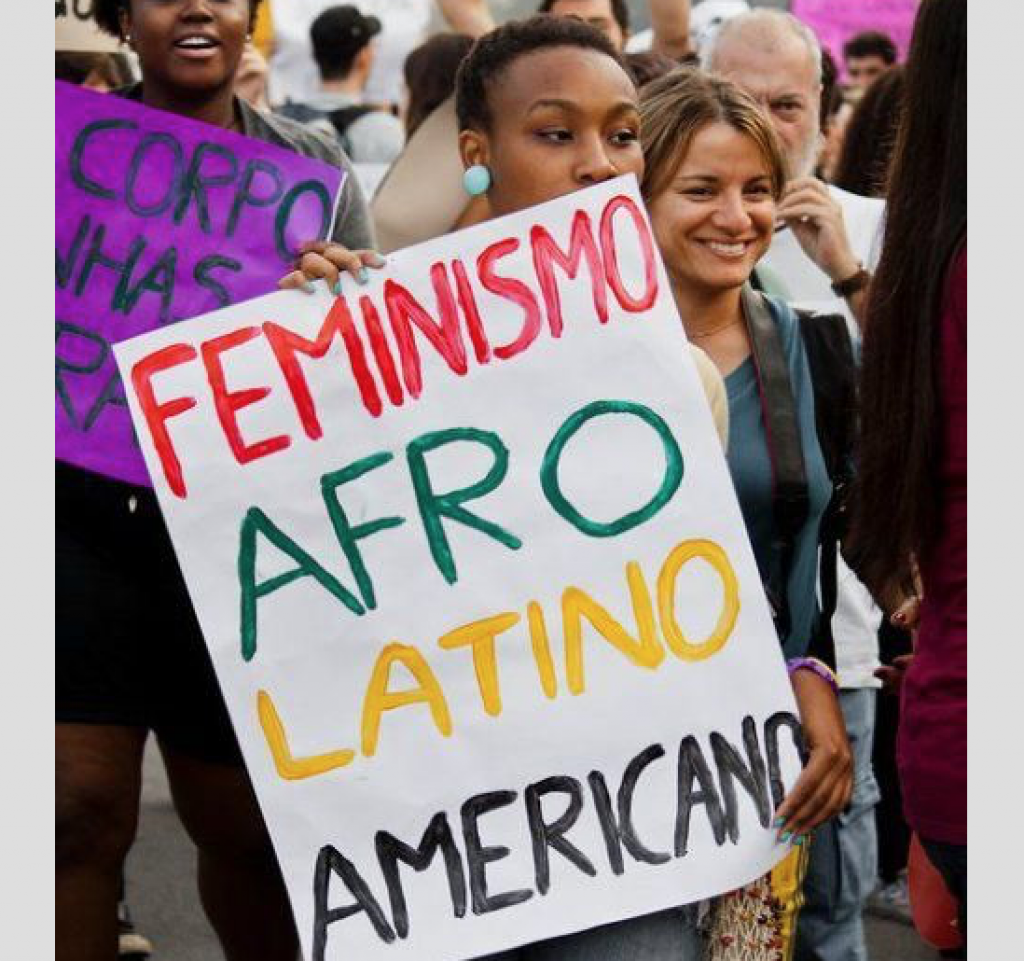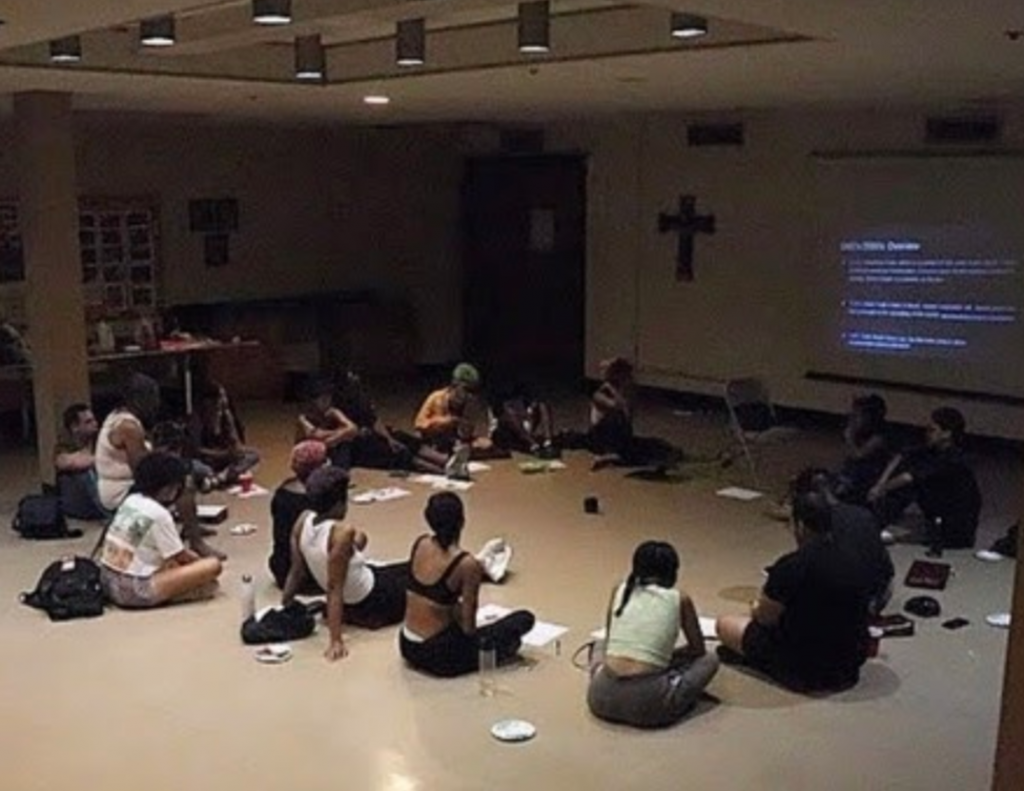By Alexandra Barbera (Alex)

Exploring the connection between artistic expressions and our identity can lead to transformative growth. It can help us find undiscovered parts of ourselves. As a person of African descent, I have always been interested in learning about my roots, my ancestors and the meaning associated with it. Over the years, I have grown to embrace my blackness and support the voices of the black community with my fist held high in solidarity with Black Power.
When I think of Black Power, I think of communities coming together to stand up against and oppressive force such as the increase police brutality towards poor POC. I recently came across an article that pointed to the disconnect between the black-American community and those of Afro-Latinx decent. I questioned why they would want to pit diverse members in the black community against each other when we could instead, embrace our differences, and become a united force. I realized there was a disparity in the way society perceives black and Afro-Latinx experiences.
Wanting to explore the intersections of black culture, I sought out ways in which Latinx and Black theories integrated within our everyday lives. I came across a dance class called Stardust en el Sur, a music history and movement class in the Upper West Side of NYC that focuses on black genres from Latin America. I decided to reach out to the facilitator of the class, Moréna Espiritual, to inquire about the overall concepts and ideologies that drive their work.

How Black and Latinx Experiences Connect Through Culture, Art and Movement.
Alex: Your class is an example of how self-expression can be a form of healing. How did you come up with the concept for Stardust en el Sur and what was the motivation behind it?
Moréna: It’s been going on for almost a year. I came up with it myself within a collective I’m apart of called Radical Love Consciousness. The collective focuses on re-indigenization instead of decolonizing; our ideology is that when you decolonize something you’re left with nothing, where as if you focus on building what you envision for a better society & life, while allowing that vision to be informed by ancestral wisdom, the things that you don’t want will fall apart within that process.
Stardust en el Sur is apart of a larger education project we have developed in an effort to make education more accessible to our communities and eliminate hierarchies by allowing members of the community to stand up & teach something they are knowledgeable about.
Alex: Right, so in a way you’re fighting against the systematic constructs of education, whereas traditional learning environments can be restrictive and toxic for creativity.
Moréna: Exactly. Stardust, specifically, was created by me to combat the erasure of black history within Latinx culture as well; people dance to our music, but they don’t know black Latinx music.
Alex: I agree, it’s become so mainstream now — it’s an afterthought for most people. That is what stood out to me most about your class, one part consists of learning about the genre itself and the other half is dedicated to performance and movement exercises. It’s so necessary to form that connection again between music history and dance.
Moréna: I teach Afro-Latinx music history so the history is not lost. During the music history and dance theory part, we reflect communally on what dancing means to us in its many layered ways. It allows people to define dance for themselves so I am not dictating what it should be; leaving room for questioning and giving people a place to form their own perspectives on dance.
Today, dance has been alienated from the history part. As POC our ancestors were dancing since the start of time for mourning ,celebration, and countless spiritual reasons. The strict focus on skill popularized in our society now is a form of white supremacy— because what does it mean to dance something incorrectly? It does not allow us to be ourselves.
Alex: Exactly, traditional dance schools are so structured and not inclusive in terms of race, gender, body size, etc. Mainstream dance culture puts limitations on what is or isn’t dance. And personally, I see that as a form of intimidation and control.
Is the class open to everyone?
Moréna: Yes it’s open to all levels, all ages; no one is turned away. So far it’s mainly been queer POC.
Alex: In terms of having an open learning environment, what are some challenges you’ve faced thus far as the class facilitator?
Moréna: The most difficult thing is dealing with everyone’s perceptions of dance. Some people are resistant, while others are up and ready to dance.
For the music history part we pick a genre and trace it back to its inception, which is pretty simple for the most part. For the second half with the performance exercises, I give people the tools to create dances, freestyles, and implement self -expression. The goal is to allow people to develop their own organic movement and use this in their everyday lives, however, this can be new to some people who expect a choreography based dance class, or just intimidating to some.
Alex: What misconceptions do you think people have of Afro-Latinx culture?
Moréna: The biggest misconception is that people don’t always think we exist, people think we’re just African-American. I myself discovered there are black people in Colombia or Venezuela but were not acknowledged through watching music videos in my teenage years, because most of the Latinx representation on television was white or mestizo, and I never learned about my history as an Afro-Latino person in school, so I was unaware there were black people in other Latinx countries.
Alex: Do you think there is a disconnect between how Black and Latinx experiences are formed through music history and performance?
Moréna: Yes because a lot of Afro-Latinx people I know look up to black American people; create entire genres and movements inspired by the things that black Americans have done, where as it’s been rare for me to meet black Americans that are informed on the history of other black people across the South American diaspora, so there is definitely a disconnect. Black American people should know our blackness goes beyond what country we are in and we’re all black and we should all be caring about each other and trying to preserve our people.
Alex: Should more people utilize forms of self-expression such as dance?
Moréna: Yes, art is a healing tool.
After my conversation with Moréna I thought of how our ancestral roots and heritage may feel distant at times but they can be reclaimed as an important reflection within ourselves. Music, art, and movement are forms of introspection — to find meaning you may not have known was even there.
Culture: From my own perspective, music is a reflection of my own ancestors who were once slaves, also to form connections and build a sense of togetherness between Black and Afro-Latinx ideologies. As marginalized groups it is important to build each other up rather than breaking each other down.
Music: At times when we’re in bars with our friends dancing to African music or Reggaeton, take a step back and think about the history behind it. As stated in an article on PBS, “Music was a way for slaves to express their feelings whether it was sorrow, joy, inspiration or hope. Songs were passed down from generation to generation throughout slavery. “
Movement: Dancing has many physical and mental health benefits. Mentally, dancing can be a form of self-love and self-care, a time to let go of the stress and worries of our everyday lives. Physically, it can be a place to embrace our bodies and express the movements that is most true to ourselves. Most importantly to dance outside of the constructed techniques set in place by traditional dance theory — break boundaries and be free to express yourself.
Click here to find links to the class and Moréna’s other social media platforms
Moréna Espiritual is a queer Afro-Taíno teaching artist, performer, and organizer based in NYC. Their work focuses on ancestral healing, re-imagining societal structures to create black/brown utopias, & inquiring about all emotional bodies that can live through the “self.” They created the only queer performance event series & exhibition to happen monthly at the historic Langston Hughes House, called “In Honor of Our Roots.” As a performer, they have touched the stages of the Brooklyn Academy of Music, Brooklyn Arts Exchange, & New York Live Arts with an Off- Broadway show. Their brain child, “Stardust en el Sur: A Music History & Movement Class,” which explores the legacy of Afro-Diasporic genres in Latin America as communal dialogue, currently runs every Tuesday in the Upper West Side from 7pm-9pm, at the church of St. Matthew & St. Timothy